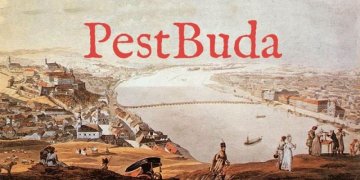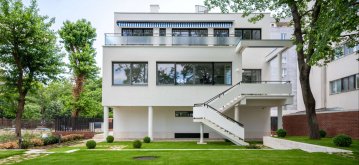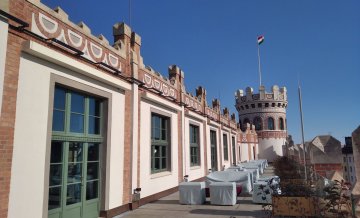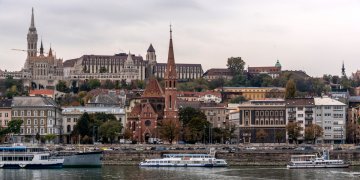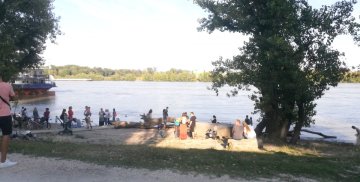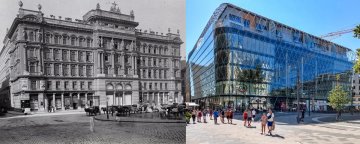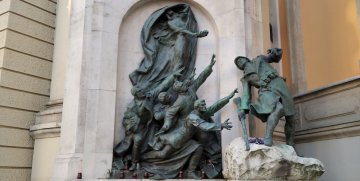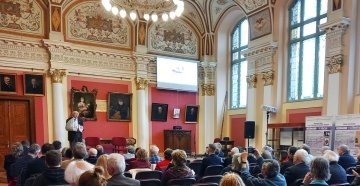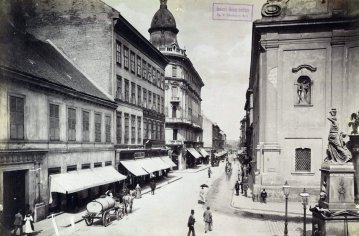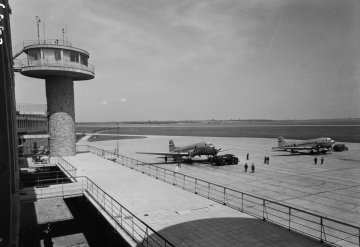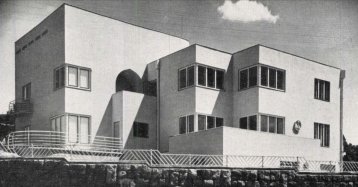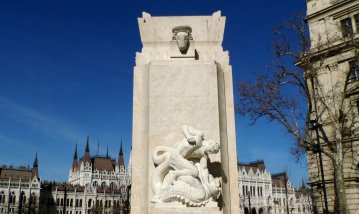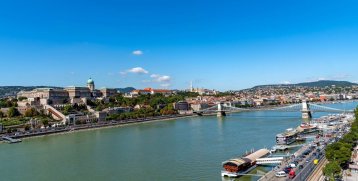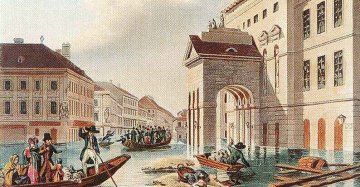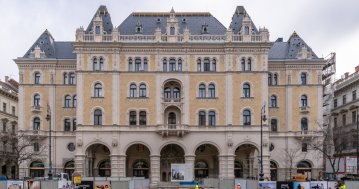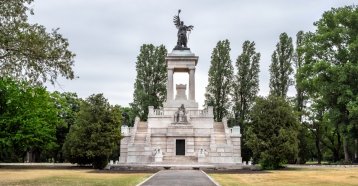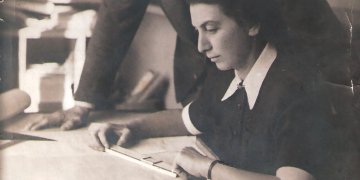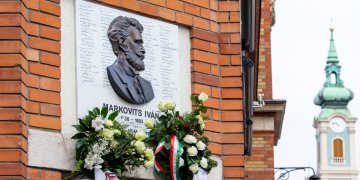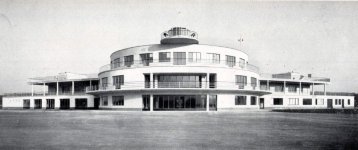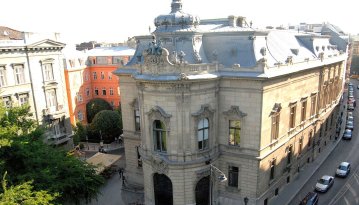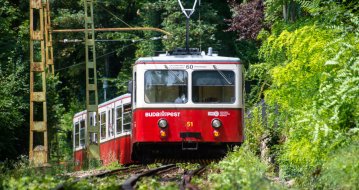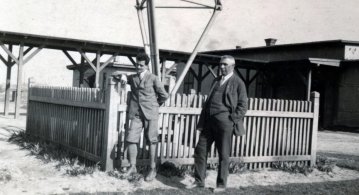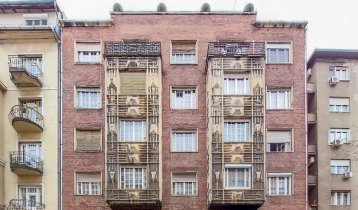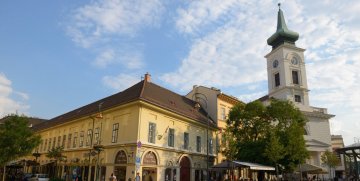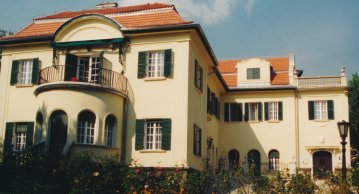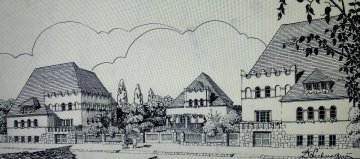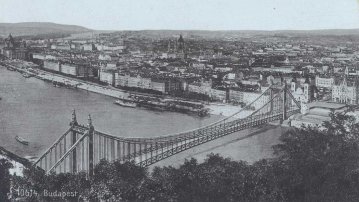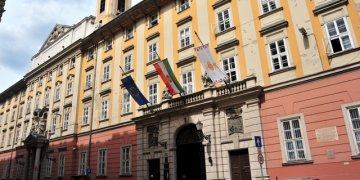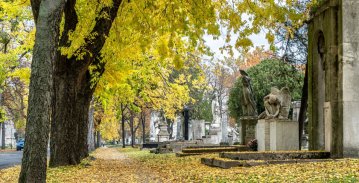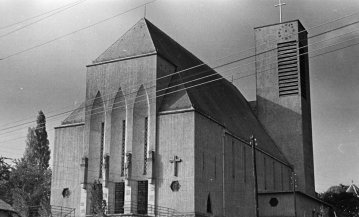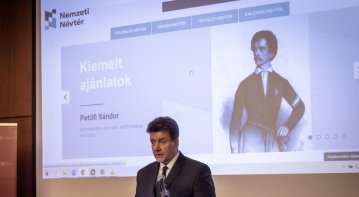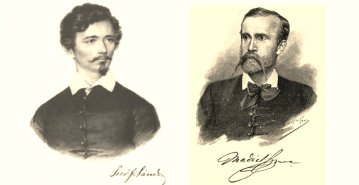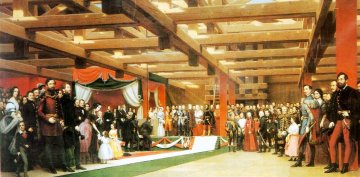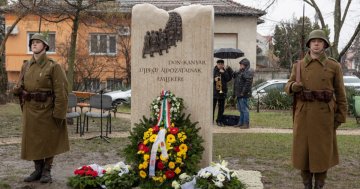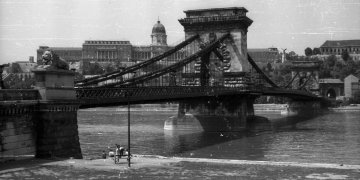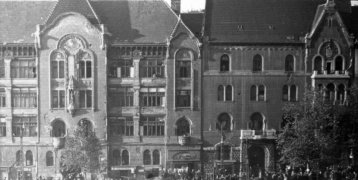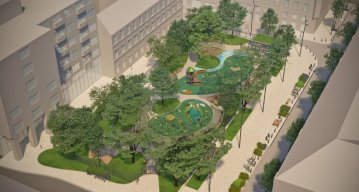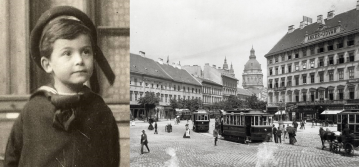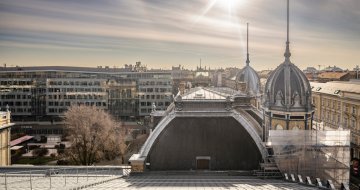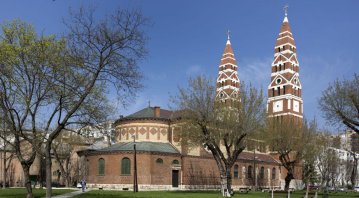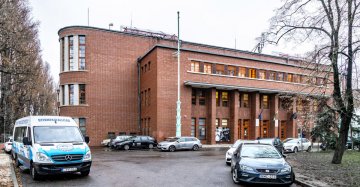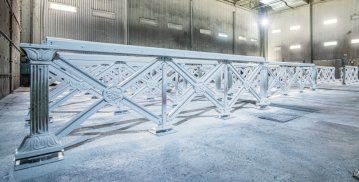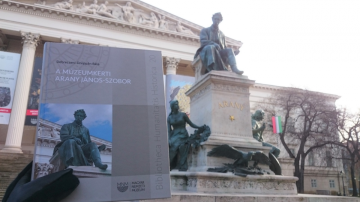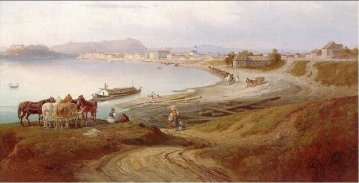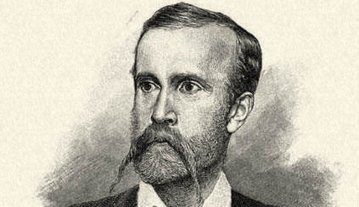 The „intertwined history” of the bridges and the city of Budapest
Which ideas and events have shaped the fate of bridges of Budapest and the cityscape? Alongside many other interesting facts, this question is also answered this newly published book by the Budapest City Archives, which introduces the history of bridges in Budapest.
The „intertwined history” of the bridges and the city of Budapest
Which ideas and events have shaped the fate of bridges of Budapest and the cityscape? Alongside many other interesting facts, this question is also answered this newly published book by the Budapest City Archives, which introduces the history of bridges in Budapest.
Search result
Pestbuda – Magazine from Budapest
August 28, 2023 at 5:04 PM
The world of modern architecture is revealed - PestBuda visited the Walter Rózsi Villa
May 31, 2022 at 9:00 AM
The new exhibition building of the Hungarian Museum of Architecture and Monument Protection Documentation Centre is in fact an exhibition object in itself. The institution has not had its own exhibition space for more than half a century, but now it has got a truly authentic one: a modern villa where visitors can not only get information about this style from wall texts and pictures, but also perceive its features in the space.
Stunning interiors - PestBuda visited the renovated Postal Palace
March 20, 2022 at 9:00 AM
The best-known building of Széll Kálmán Square is the former Buda Postal Palace, which has been dignified over the area since its handover in 1926. Hungarian Post (Magyar Posta) moved out of it in 2008, so it was empty for many years, it only found a customer in 2016. It was transferred to the Hungarian National Bank in 2018, and thanks to the reconstruction that began at that time, the building was reborn as the HNB Supervisory Centre and Money Museum. Huge changes have taken place, but they have been carried out with careful attention, and the interiors have been renewed in a way that also reflects the original states. PestBuda toured the renovated building.
The pentagon of the Buda bank of the Danube - Pestbuda visited the completely renovated church of Szilágyi Dezső Square
October 21, 2021 at 10:30 AM
The Szilágyi Dezső Square Reformed Church was taken over by the faithful on Palm Sunday of 1896, so this year it celebrated the 125th anniversary of its construction. The Parish kept track of the anniversary and two years ago began the interior renovation of the building, which was largely completed in March. Due to the month of architecture - and as the Reformation Day approaches - Pestbuda was able to see what the new interior became like.
A place already loved by the Romans - Discover the Roman Beach with Pestbuda
September 11, 2021 at 12:00 PM
If swimming or eating 'lángos' means relaxation, people usually think of Lake Balaton as a destination. However, Roman Beach offers a similar opportunity in Budapest. The first legal public Danube beach in the capital opened here in the summer of 2021 - after a long break. But the Roman Beach is much more than that. The area is the only place offering a real waterfront experience along the Danube section of Budapest, its special milieu captivates the visitors. If someone really wants to get to know the five-kilometre beach, get ready for a multi-hour trip as Pestbuda reporters did. Take a closer look at the beach with the author.
Pestbuda recalls how much Budapest has changed in 100 years with 6 interesting pairs of pictures
July 30, 2021 at 9:00 AM
It is always exciting to follow the change, especially when it comes to Budapest. Old photos faithfully document what a house, street or square in the capital used to be like. With their help we can recall the former Haas Palace in Gizella Square, marvel at how - in the 1880s and 1890s - barren the Rózsadomb was, and today's Margit Boulevard were more like the streets of a small town. Factories stood on the banks of the Danube in Pest, next to the Parliament building under construction.
The English edition of PestBuda magazine now live
November 13, 2020 at 2:00 PM
The PestBuda urban history magazine is launching an English edition to provide meaningful information and quality articles to internationals living, working or studying in Hungary, and the descendants of Hungarians around the world who no longer speak Hungarian, about the rich urban heritage, culture and often surprising history of Budapest.
Editorial Team
May 31, 2023 at 12:00 AM
Drama on the university wall - The heroic monument was planned 95 years ago
March 30, 2023 at 9:00 AM
In the constant hustle and bustle of the Egyetem Square in Pest, the students may not even notice the monument that decorates the short section of wall between the church and the central building of ELTE. However, it commemorates their predecessors, the heroes who fought for their country in World War I, and those who heroically helped them. The first design of the dramatically collapsing soldier was born in 1928, ninety-five years ago.
A message from the former school: An exhibition in memory of János Neumann was opened at the Fasori Secondary School
March 29, 2023 at 9:00 AM
An exhibition was opened in János Neumann's former school, the Fasori Lutheran Secondary School, on the occasion of the 120th anniversary of the world-famous mathematician's birth. In the exhibition presenting the former Neumann milieu, paintings, graphics, photos, furniture, and objects tell the story of the art-supporting spirit of the noble bourgeois family at the turn of the century.
If the efforts of 1848 had not failed, Szabadság Square would be somewhere else today
March 28, 2023 at 12:30 PM
Do you know where Diadal Street or Szabad Sajtó Street was in 1848? Not where many would think. During the revolution of 1848, the street names of Pest and Buda also changed.
Sightseeing flights over Budapest - This is how air travel was popularised 70 years ago
March 26, 2023 at 3:00 PM
Seventy years ago, the Hungarian airline of the time, MASZOVLET, wanted to bring aviation closer to the general public, so it invited interested parties to a quarter-hour sightseeing flight. Many were flying for the first time, the oldest passenger was over 80 years old.
Luxury in the white cubes - 90-year-old modern villas in Buda
March 23, 2023 at 10:00 AM
The Buda side of the capital, with its wonderful landscapes and fresh air, is still very attractive today, and it was like this even in the first half of the last century. Many people from Pest, which became especially crowded after the Treaty of Trianon, moved to the other side of the Danube and from the beginning of the thirties, they built modern-style villas on the hillsides. Pestbuda now presents two of them below, into which their residents moved ninety years ago.
Stone coffin in front of the Parliament - The Monument of National Martyrs was unveiled 89 years ago
March 20, 2023 at 10:30 AM
Statues of many statesmen can be seen in front of the Parliament, which is why the Monument of National Martyrs, located next to Kossuth Square, on Vértanúk Square, receives relatively little attention. The dignified work even in its simplicity commemorates the victims of the proletarian power after World War I. After five years of preparation, it was unveiled on 18 March 1934, exactly eighty-nine years ago.
Budapest was chosen as one of the top 50 tourist destinations
March 17, 2023 at 5:00 PM
Budapest is also included in Time magazine's list of 50 best tourist destinations. The American weekly with a readership of more than 50 million reports on the 150th anniversary of the unification of the capital, mentions the new attractions of the Buda Castle District, the Chain Bridge, the recently opened Museum of Ethnography and the House of Music Hungary, as well as the renovated Opera House. The reborn St. Stephen's Hall is also highlighted among the attractions.
The renewal of the City Park continues, the new National Gallery is also planned to be built
March 17, 2023 at 1:30 PM
The Liget Budapest project continues with family-friendly developments, in addition to the recreational functions of the park, other green areas are also renewed: this year, the KRESZ park and its surroundings, the section of the Dvorák Promenade between the Museum of Ethnography and the House of Music Hungary, and the area surrounding the balloon observatory will also be renovated. The construction of the new National Gallery is also planned.
In the footsteps of Petőfi: A walk around the sites of the Revolution of 15 March in Pest and Buda
March 15, 2023 at 11:00 AM
The sites of the Revolution of 15 March 1848 in Pest and Buda can still be visited today, and even some of the buildings that played an important role in the events are still there: standing in front of the National Museum, the Landerer and Heckenast Printing House, the Locotenential Council and the Táncsics-prison, anyone can recall the events.
Trauma and milestone - The story of the Pest-Buda flood of 1838
March 13, 2023 at 5:00 PM
185 years ago, between 13 and 18 March 1838, the Danube flood, which is considered to be the largest in the history of the settlements in the area of today's Budapest, which had an independent public administration at the time, devastated the area. The natural disaster also called the ice flood, caused the most serious damage in Pest, which was at the dawn of development during the Reform Era. While in the other settlements, life returned to the previous state after the flood receded, in Pest, after the destruction, using more durable materials, it was possible to rebuild the city on a new scale.
The facade of the Drechsler Palace, which is under renovation, can already be seen
March 13, 2023 at 11:00 AM
The building at 25 Andrássy Avenue, the former Ballet Institute, known as the Drechsler Palace, was built for the Pension Fund of the Royal Hungarian State Railways according to the plans of Ödön Lechner and Gyula Pártos. The building is being converted into a five-star hotel, its facade is already visible. Pestbuda now presents some pictures of the building.
Visitors are invited to the 1848-49 memorial walk in the Fiumei Road Cemetery on 15 March
March 12, 2023 at 2:00 PM
On 15 March, from 2 p.m., the National Heritage Institute will hold a walk at the Fiumei Road Cemetery National Memorial with the title "Memory of 1848-49". On the day of the holiday, people can also freely visit the largest tomb structures in the cemetery so anyone can look into the Batthyány, Deák and Kossuth Mausoleums.
Trains will be running again from 20 March on the entire M3 line on weekdays
March 10, 2023 at 3:00 PM
Trains will be running again from 20 March on the entire M3 line, between Újpest Centre and Kőbánya-Kispest, but it is still not stopping at Lehel Square and Nagyvárad Square stations. The renovation of metro line 3 is expected to be completed in May.
The first Hungarian female engineer was born 125 years ago - She wanted to build bridges, roads and railways
March 8, 2023 at 3:00 PM
Eszter Pécsi, the first Hungarian female engineer, received her statics degree at Royal Joseph Polytechnic University on her 22nd birthday, making her the first female graduate engineer in the country. She notes the plans for the statics of the Alfréd Hajós Swimming Pool, but after 1945 she also took part in the revision of the capital's damaged buildings, as well as in the reinforcement work of the cracked roof of the National Theatre. She was responsible for the construction of several villas in the capital, such as the recently renovated Rózsi Walter Villa, which was designed by her husband, József Fischer. In Pestbuda's article, we remember the first Hungarian female engineer.
A memorial plaque was inaugurated on the building of the Batthyány Square Market Hall
March 7, 2023 at 8:00 PM
At the junction of Markovits Iván Street and Batthyány Square in the 1st District, on the wall of the market hall built according to the plans of Pál Klunzinger, handed over in 1902, a memorial plaque was unveiled in honour of Iván Markovits, the creator of Hungarian shorthand.
The pioneer of modern architecture - Virgil Borbíró was born 130 years ago
March 6, 2023 at 10:00 AM
In the first half of the 20th century, Hungarian architectural public life was punctuated by many debates: at first, the Hungarian design language was at the centre, then from the second half of the 1920s, modern architecture. Virgil Borbíró took on a fighting role in the latter and fought determinedly for the new trend to gain ground. The engineer, who was born exactly one hundred and thirty years ago, left his mark on Hungarian cultural history not only with his buildings but also with his writings and organisational work.
From eclecticism to brutalism: Budapest's protected buildings are presented
March 2, 2023 at 4:00 PM
The exhibition titled "From Eclecticism to Brutalism: Architectural Assets Excavated in Budapest between 2017-2022" opens today at the Metropolitan Ervin Szabó Library. Through the buildings that have been placed under local protection in the past five years, the exhibition presents the change of architectural styles found in the capital from the end of the 19th century to the beginning of the 1970s.
The cogwheel restarts in April
March 1, 2023 at 5:00 PM
The cogwheel railway will start again on 1 April, the track was renovated during the winter break. It is a novelty that this summer the open nostalgia train will run several times between Városmajor and the Széchenyi Hill terminus.
The radio is playing - Experimental broadcasting started 100 years ago
March 1, 2023 at 1:00 PM
Regular public radio broadcasts started in Hungary at the end of 1925, but it was possible to listen to the radio in Hungarian in the country more than two years before public broadcasts began because experimental broadcasts started in March 1923.
The small mirror of Art Deco - The lesser-known side of Frigyes Spiegel, who died 90 years ago
February 28, 2023 at 10:00 AM
Frigyes Spiegel wrote himself into the history of Hungarian architecture with his fantastic facades: his Art Nouveau buildings are the earliest appearances of the new style in the country. His genius naturally followed the changes of the times, and between the two world wars, he also left his mark on Art Deco - even if only to the extent of a single building. However, the historical circumstances also increase the value of this work of his, which also belongs to the elite in its category.
Károli Gáspár University of the Reformed Church turns 30 years old
February 27, 2023 at 3:00 PM
Thirty years ago, the Synod of the Reformed Church, at its meeting on 24 February 1993, decided to found the Károli Gáspár University of the Reformed Church on the foundations of the Pest Reformed Theological Academy. The choice of name caused some controversy, but his work, the first complete Hungarian Bible translation, was in favour of Gáspár Károli, as it serves as the basis of universal Hungarian culture. University education started at 28 Ráday Street, the former seat of the theological academy, but due to the growing number of students, new locations had to be found. Nowadays, the students of the reformed university can study in such patinated buildings as the Károlyi-Csekonics Palace on Reviczky Street or the former Municipal School for Girls on Aréna Street.
The Gizi Bajor Actors' Museum is reopening its doors
February 24, 2023 at 7:00 PM
On 1 March, the Gizi Bajor Actors’ Museum in the 12th District reopens, where permanent and temporary exhibitions await those interested in theatre art. A villa walk is also held in the former home of Gizi Bajor, a permanent member of the National Theatre. Visitors can discover the secret spaces of the building that have been hidden from the public until now, from the basement that once hid refugees to the attic, as well as the mysterious corners of the garden.
Where a movie star lived 100 years ago - Kálmán Rózsahegyi's villa
February 24, 2023 at 9:00 AM
Kálmán Rózsahegyi was one of the greatest actors of the first half of the last century, in addition to his stage presence, he also played in many cult films. For his fiftieth birthday, his fans wanted to surprise him with a family house, for which they started a fundraiser. The plans were drawn up by Jenő Lechner a hundred years ago, in 1923, and he created a sumptuous luxury villa with his brilliant idea and great sense of style. Three years later, the actor was able to occupy his new home after returning home from the United States of America.
Budapest then and today – 5 photos showing how much the city has changed
February 23, 2023 at 4:00 PM
The capital, which is 150 years old this year, has changed so much over time that every day citizens can marvel at a section of a street, an old building that has disappeared or that has miraculously survived. This time, with the help of five pairs of images, Pestbuda presents the passage of time from the houses of the old inner city of Pest to the flood in Tabán.
The capital decided on the naming of two public areas
February 22, 2023 at 6:15 PM
The decision to name Diana Lane (Diana köz) located in Hegyvidék was made in 1985, and it has now been officially registered, and the hitherto anonymous continuation of the public area was also named Diana Lane. And in the 20th District, the name of Vereckei Street was clarified to the currently used Verecke Street.
A memorial site is being prepared in the Fiumei Road Cemetery for Hungarians whose resting place is not in the country
February 21, 2023 at 6:30 PM
The National Heritage Institute wishes to create a symbolic place of remembrance in the Fiumei Road Cemetery, which serves as a memorial site for all the former compatriots who do not have a resting place within Hungary's borders, either because their graves are located in other countries, or because the 20th century's traumatic events did not allow them to be buried anywhere.
Gemstone along the Devil's Trench - The idea of the emerald church was born 90 years ago
February 21, 2023 at 2:00 PM
A fantastic church is hidden among lavish villas, just a few hundred metres from the tram terminus in Hűvösvölgy. Its modern forms suggest that it was built in the 20th century, but visitors might not even imagine how long the work took - competing with medieval cathedrals, it was completed in several decades. However, the result was equally brilliant, the Gothic and modernism are perfectly combined in it. The idea of building the church in Remetekertváros was born ninety years ago, in 1933.
The Hungarian National Name Directory was expanded in cooperation with OSZK and NÖRI
February 20, 2023 at 8:00 PM
The National Széchényi Library and the National Heritage Institute presented the new results of the expansion of the Hungarian National Name Directory. Thanks to the cooperation, from 16 February, the material of the Personal Name Directory, Geographical Name Directory and Board Name Directory will be connected to the database of memorial places, in which memorial places across the border will also appear. The digital interface is an interconnected network of people, geographical places, bodies, and memorial sites that are important for national memory, and is accessible to everyone.
The young loves of Madách and Petőfi
February 19, 2023 at 11:00 AM
In a voice of unclouded happiness, Imre Madách told his brother about the ball at which he danced with the love of his youth, Menyhért Lónyay's sister, Etelka Lónyay, but the unrequited love did not turn into a proposal. Petőfi had the courage to ask the daughter of a rich banker for her hand in marriage, but she offered it to Menyhért Lónyay. In connection with this year's Madách and Petőfi anniversaries, Pestbuda recalls the loves of youth, offering a glimpse into the world of reform-era balls.
Who also painted the construction of the Chain Bridge: Miklós Barabás died 125 years ago
February 17, 2023 at 12:30 PM
We can confidently say that Miklós Barabás was one of the most outstanding artists of the Reform era, the first painter who earned the respect of society with his artistic work. During his long career, he made portraits of many important and well-known personalities, including Mihály Vörösmarty, János Arany, Ferenc Deák, Palatine Joseph, and even Franz Joseph. The capital also often provided the subject of his pictures. He achieved great success with his paintings, and the press regularly reported on his current works. It was thanks to his exceptional talent that he managed to gain fame at a time when the work of painters was not yet highly valued.
A monument was erected in Újpest to the soldiers who died at the Don River
February 16, 2023 at 8:00 PM
A memorial was inaugurated in the 4th District in honour of the Újpest soldiers who fell at the Don River in World War II. The work depicts the last marching column of soldiers marching far into the distance, on the reverse side of which five soldiers' graves can be seen.
The Chain Bridge was closed 50 years ago as well
February 16, 2023 at 1:30 PM
The Chain Bridge was closed 50 years ago as well, as after its reconstruction in 1949, it needed to be renovated again. The works were timed for the 100th anniversary of the unification of Pest, Buda and Óbuda. The old painting had to be removed from a surface of 73,000 square metres, but at that time the 1949 coat of arms was also replaced with the version current in 1973.
The father of the Lágymányos residential houses, architect József Fischer was born 150 years ago
February 14, 2023 at 12:30 PM
Architect József Fischer was one of the important creators of the large-scale residential house constructions that began at the beginning of the 20th century. His buildings still define the image of Lágymányos. If people walk from the direction of Szent Gellért Square on Bartók Béla Road towards Móricz Zsigmond Square, or walk over to Budafoki Road, from here they turn into Zenta Street, they can see several residential houses that he listed. He designed around 25 houses in the capital, most of which are still standing today. Pestbuda now commemorates József Fischer, who was born 150 years ago.
Hild Square in the 5th District will be beautified by autumn
February 13, 2023 at 6:00 PM
Many people do not even know that Hild Square in the 5th District, which is being renovated, did not exist as a public space before, because there was a building here until 1944-45. The basement level of the destroyed house has remained to this day, which makes it difficult to replace the soil. Despite the difficulties, many new trees will be planted, there will be new shaded areas, vertical green surfaces, new public benches, a table tennis table and an accessible playground. Residents of the area can take possession of the renovated area in autumn.
One of the sharpest-minded Hungarians - The Budapest life of the young János Neumann
February 8, 2023 at 12:30 PM
The world considers him mostly a mathematician, but János Neumann was a great polymath of the 20th century. His achievements affect several scientific fields. He left Budapest when he was young, but his entire childhood was tied here: his excellent education and the years he spent in one of the best Hungarian secondary schools helped develop his brilliant mind. On 8 February, the 66th anniversary of his death, on the occasion of the Neumann Memorial Year announced for 2023, Pestbuda toured the main stations and locations of his life in the capital to recall his mind and personality.
The renovation of Nyugati Railway Station continues with spectacular developments
February 6, 2023 at 7:00 PM
In addition to the renovation of the north-west tower on the Teréz Boulevard facade of the Nyugati Railway Station, work will also begin on the south-east tower. The protective roof in front of the renewed facade is expected to be demolished in autumn.
Ernő Foerk, who built a church in a slum, was born 155 years ago
February 3, 2023 at 9:00 AM
Ernő Foerk is not one of Hungary's famous architects, but almost everyone knows his main work, the Votive Church of Szeged. A building very similar to it can also be found in Budapest, namely in Tripolisz of the 13th District, which was one of the capital's scariest neighbourhoods. The St. Michael's Parish Church, consecrated in 1930, brought light to the part of town with a dubious reputation.
The first Hungarian Olympic champion became a famous architect - Alfréd Hajós was born 145 years ago
February 1, 2023 at 11:00 AM
Hungary is considered a great power in water sports, which was already foreshadowed by the glory of our first Olympic champion: Alfréd Hajós won Hungary's first gold in swimming. At the Athens competition, he was only eighteen years old, so he had to choose a career after his victory, and the swimmer nicknamed the Hungarian Dolphin became an architect. In the first half of the 20th century, Alfréd Hajós, who was born 145 years ago, achieved good results in this field as well, his works were of the high standard of the era.
The railings of the Chain Bridge are being painted
January 31, 2023 at 7:30 PM
They are already painting the railings and historical elements returning to the sidewalks of the Chain Bridge. A significant part of the bridge's 704-metre railing structure was remanufactured due to damage caused by rust. Eight arched parapet castings are reconstructed based on archival photos to match the appearance of the Chain Bridge in 1914-1915.
The meeting of a unique sculptor and the cult of Arany - Description of a period with the help of a 130-year-old famous monument in Pest
January 31, 2023 at 9:00 AM
130 years ago the first public statue of János Arany was inaugurated in front of the main entrance of the Hungarian National Museum. In a new book that has just been published, not only is the entire history of the monument and the adventurous life of its creator, Alajos Stróbl, revealed to the readers, but they can also see how the people of the 19th century thought and debated, what they considered beautiful and right, what they were different from or just similar to people now. The book, which is also rich in images, is both a colourful introduction and an exciting description of a period.
Who painted Pest and Buda several times: Antal Ligeti was born 200 years ago
January 30, 2023 at 4:00 PM
Antal Ligeti, born 200 years ago, was one of the outstanding figures of Hungarian painting. He lived in extraordinary places, first in the Fót castle of Count Károlyi István, later in Budapest's most famous classicist palace: the National Museum building. He owed his first home to the support of the lord, who recognised the talent of the young painter and provided him with housing and board as a patron. He earned his home in the building of the National Museum as the keeper of the picture gallery, lived there for more than twenty years, and was taken to the cemetery from there.
Imre Madách, born 200 years ago, became a writer in Pest
January 28, 2023 at 9:00 AM
The young Imre Madách lived in Pest for three years. While completing his law studies at the University of Pest, he also got involved in social and cultural life. He regularly visited the performances of the Hungarian Theatre of Pest, attended concerts at the National Casino, but the highly educated young man also learned to paint, fence, and play the piano in the capital. His first volume was published here. Pestbuda remembers Imre Madách, who was born 200 years ago.
 The „intertwined history” of the bridges and the city of Budapest
Which ideas and events have shaped the fate of bridges of Budapest and the cityscape? Alongside many other interesting facts, this question is also answered this newly published book by the Budapest City Archives, which introduces the history of bridges in Budapest.
The „intertwined history” of the bridges and the city of Budapest
Which ideas and events have shaped the fate of bridges of Budapest and the cityscape? Alongside many other interesting facts, this question is also answered this newly published book by the Budapest City Archives, which introduces the history of bridges in Budapest.
 The Bridge Report, which brought a turning point in the history of Budapest
A travel report that changed the history of Pest and Buda, as well as Hungary. The little book contributed to the change of half a thousand years of legal customs and the implementation of an investment of unprecedented size and technical quality. This book was The Bridge Report [Hídjelentés in Hungarian].
The Bridge Report, which brought a turning point in the history of Budapest
A travel report that changed the history of Pest and Buda, as well as Hungary. The little book contributed to the change of half a thousand years of legal customs and the implementation of an investment of unprecedented size and technical quality. This book was The Bridge Report [Hídjelentés in Hungarian].
 The renovated Angyalföld Reformed Church was handed over
On 26 March, the renovated Frangepán Street Reformed Church was handed over. The 13th District church was built in 1933, the tower was restored in 2017, and the roof and facade were renovated last year. By the time of the ceremonial handover, the building had completely recovered its form ninety years ago.
The renovated Angyalföld Reformed Church was handed over
On 26 March, the renovated Frangepán Street Reformed Church was handed over. The 13th District church was built in 1933, the tower was restored in 2017, and the roof and facade were renovated last year. By the time of the ceremonial handover, the building had completely recovered its form ninety years ago.

